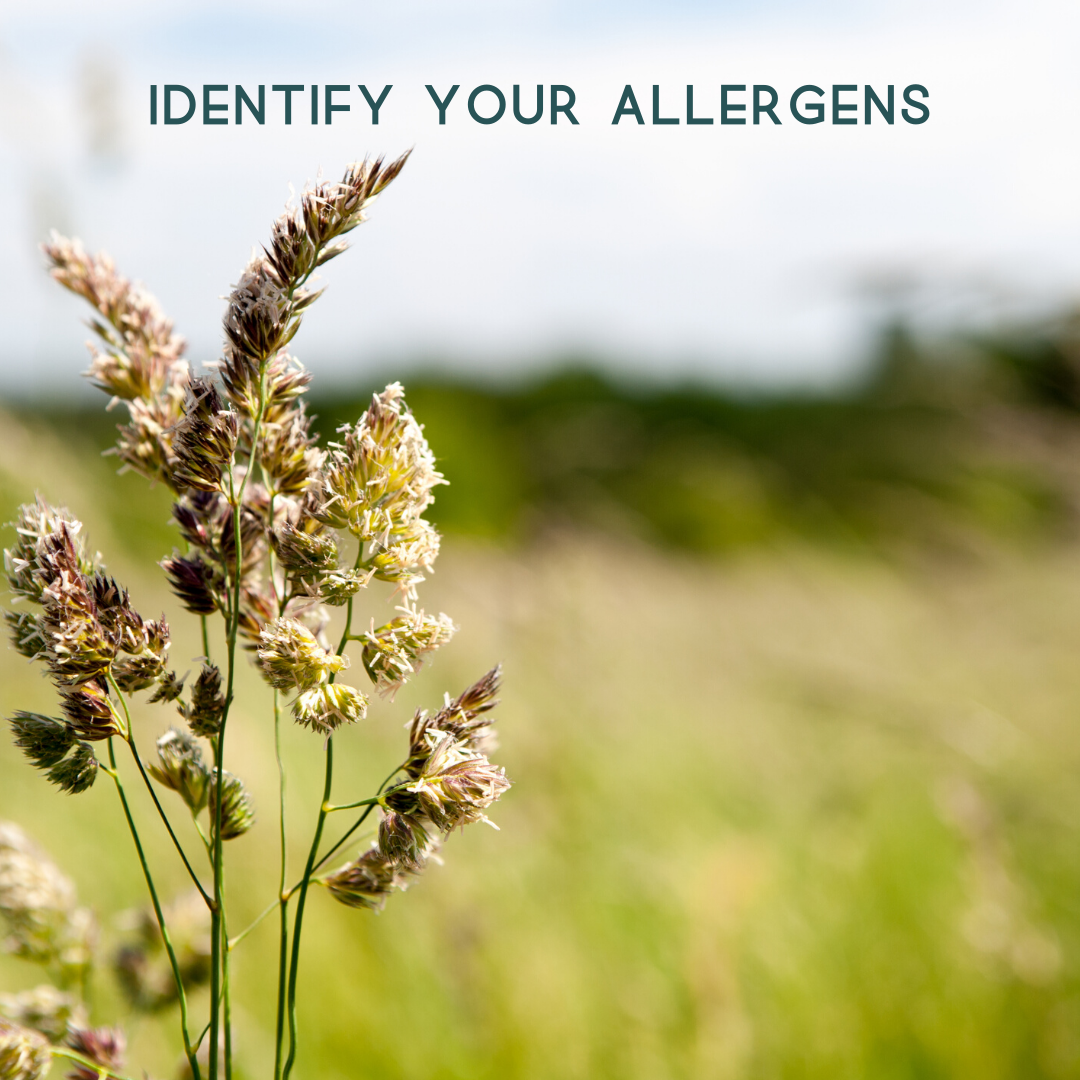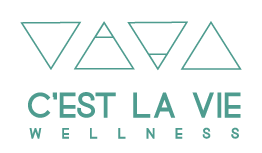Seasonal Allergies: Natural Treatments & Modalities
By Dr. Sofie Desforges-Bell, Naturopathic Doctor
Seasonal Allergies (aka Hay Fever, Allergic Rhinitis)
It’s that time of year again!
Due to the current global pandemic, we have been spending a lot of time indoors. However, this is about to shift dramatically as the temperature warms up and the sun starts to shine that much brighter. Unfortunately, for some of us, that means lots of sneezing, congestion, and itching. Yes, seasonal allergies are here!
Common allergy triggers include pollen (from grasses, trees, weeds), dust mites, molds, and pets. These allergens cause an inflammatory process in the body of those who have been sensitized, releasing mediators such as histamine. This causes vasodilation of certain tissues, especially in the respiratory tract, hence the sneezing, coughing, and general congestion.
From lifestyle and dietary modifications to supplements and botanicals, naturopathic medicine provides many tools as an alternative to over-the-counter histamines. There are many health strategies you can implement to help prevent and reduce your seasonal allergy symptoms.
Identify Your Allergens

If you suspect you have allergies, I recommend you consult with your healthcare practitioner and get a referral to an allergist if need be. Getting IgE allergy testing is important to identify your allergens so you can avoid and/or remove them from your environment, as much as possible.
Some people suspect that they suffer from seasonal allergies, when in fact they may have food sensitivities. Food sensitivities are a delayed onset reaction mediated by the IgG part of the immune system versus the IgE involved in your typical hay fever picture. Having food sensitivities does also predispose you to leaky gut and increases the overall inflammation in your body. You can find out more about your own food sensitivities by doing an elimination diet or a Food Sensitivity Test.
Another important thing to rule out is histamine intolerance/overload. Some people tend to have a higher body burden of histamine either from medications, gastrointestinal issues or consuming lots of high histamine foods. If you fall in this category, you may not suffer from overt allergies, but allergens in the environment may further trigger a histamine reaction in your body leading to very similar symptoms. If we compare your body to a bucket that is already filled with water, that extra drop might just be the tipping point that causes the water to overflow. The same goes for the histamine in your body. Allergens in the environment or in your food, might just be that extra drop in the bucket that your body cannot dispose of, and cue the allergic symptoms.
The point is that you must get to the root cause of your disease in order to treat your condition appropriately and effectively and avoid merely managing symptoms with band-aid solutions such as over-the-counter anti-histamines.
Lifestyle Modifications
 Once you have identified your known allergens, the best thing you can do is to avoid them and remove them from your environment, as much as possible. In certain cases, it is impossible to avoid them completely (i.e. pollen) as you are at the mercy of Mother Nature.
Once you have identified your known allergens, the best thing you can do is to avoid them and remove them from your environment, as much as possible. In certain cases, it is impossible to avoid them completely (i.e. pollen) as you are at the mercy of Mother Nature.
There are still a few strategies you can implement that may help manage your allergic symptoms.
- Air purifier with HEPA filter
- Dehumidifier for dust mites and fungus
- Washing your clothes in hot water to destroy allergens
- Nasal irrigation: Research shows that using nasal irrigation daily can help to improve symptoms such as sneezing and itching and reduce the need for nasal corticosteroids or improve their efficacy when used in conjunction. (Hermelingmeier KE, 2012)
Nutrition
When it comes to nutrition, there is no perfect diet for everyone. It is always individualized. However, as always, it is important to eat a well-balanced diet of whole foods with lots of variety. There are still a few tricks you can try to implement if your seasonal allergies are getting the best of you.
- Low-histamine diet: Even if you aren’t a person that has histamine intolerance, you may still benefit from avoiding certain foods that are high in histamine during this time of year to minimize your symptoms. It is hard to navigate through all the information on Internet relating to histamine. Fortunately, our Registered Holisitc Nutritionist Lyne, has compiled the information in her blog “Histamine in Foods“. You can also purchase our 4-week Low-Histamine Menu to get you started. Contact us for more information.
- Increase omega-3/omega-6 ratio: Omega-3s and Omega-6s are both essential polyunsaturated fatty acids. We often focus on increasing our levels of omega-3 fatty acids, through food and supplementation, because these have a known anti-inflammatory effect. Omega-6s tend to be more pervasive in our food sources already, so we don’t need to focus so much on attaining our essential levels of these fatty acids. They also can become pro-inflammatory in excess, so the idea is to maintain the proper ratio of omega-3s to omega-6s. The overall goal is to reduce inflammation in the body because it can often contribute to many allergic symptoms such as swelling, itching, and runny noses. (Okamoto) Your best sources of Omega-3 foods are fish & seafood (especially cold-water fatty fish), and nuts & seeds (especially flaxseeds and walnuts).
- Spirulina: this blue-green algae can be consumed as part of your diet or taken as a supplement. Spirulina naturally grows in salt water and in some fresh water lakes. It is a great source of minerals that is well ingested when taken orally. You do have to be wary of sourcing though as some natural sources may be contaminated. Research is starting to become more frequent with this algae for its benefits on the immune system, inflammation and infections. Although the evidence remains insufficient at this time, some preliminary research has shown that taking 2g of spirulina daily for 6 months has improved self-reported scores of sneezing, nasal discharge and congestion in adults with allergic rhinitis. (Cingi, 2008)
Botanicals*
 Botanicals can be very effective and therapeutic in the treatment of many conditions and symptoms. They are great to help nudge the body in the direction of healing and offer more than one therapeutic action which aids to support various body systems.
Botanicals can be very effective and therapeutic in the treatment of many conditions and symptoms. They are great to help nudge the body in the direction of healing and offer more than one therapeutic action which aids to support various body systems.
- Butterbur: Also known as Petasites hybridus, this shrub has some good evidence supporting its role in managing symptoms of hay fever, mostly nasal symptoms such as congestion. Interestingly, some research showed that a standardized extract of petasin (the active ingredient of the plant), might be just as effective as cetirizine (Zyrtec) or fexofenadine (Allegra), which are typical over-the-counter anti-histamines. (Schapowal, 2002) (Lee, 2004)
- Nettle (Urtica dioica): I love recommending organic nettle tea as part of the allergy prevention protocol for patients around this time of year. In combination with vitamin C and quercetin (see below for more information on these nutrients), it can be quite effective. Nettle is a very hearty and nutritious plant that has some preliminary evidence supporting its use at the first sign of symptoms. It is very safe for most, other than pregnant patients and those who are breastfeeding, and is easy to add to your daily routine as you can sip on the tea continuously throughout the day. (Mittman, 1990)
Supplements*
Supplements can be a great addition to your seasonal allergy protocol and I love using the triad of nettle tea, vitamin C and quercetin as a natural prevention.
- Vitamin C: As humans, we don’t make our own vitamin C like most other mammals, and therefore it is essential that we get it from our diet. We get a lot of it from fruits and vegetables, however for a more therapeutic effect supplementation is often necessary to achieve the higher dose and concentration required. Although most of the evidence for hay fever and vitamin C is insufficient, a few studies have shown promise. One in particular showed that a single dose of vitamin C of 2g reduces the airway response when exposed to histamine in the environment for about 40% of adults with allergic rhinitis. (Bucca, 1990)
- Quercetin: Quercetin is a flavonoid that is naturally occurring in some foods such as onions, apples, and berries as well as in several herbs. Quercetin is thought to be a natural anti-histamine because of its ability to inhibit the release of histamine from mast cells in the body, a great alternative to over-the-counter products. (Otsuka, 1995) However more research is needed on its effect for the relief of allergic symptoms.
Book A Visit
As you can see, naturopathic medicine offers many complimentary and alternative natural treatment options not only to treat allergic symptoms but also to prevent their onset at this time of year. If you would like to learn more what naturopathic medicine can do for you and your allergies, book in for a Free Naturopathic Meet & Greet (15-min). I am currently continuing to offer my services virtually for patients, by phone and video and we hope to reopen the clinic soon for those of you requiring in-person services.
* Please note that although botanicals and other supplements may be more natural than most pharmaceuticals, they nonetheless have very therapeutic effects and can interact with other supplements, herbs, and/or medications. Some botanicals may be unsafe to use with certain health conditions as well. Always consult your healthcare practitioner before starting, changing, or stopping any supplement or herbal product.
References
Bucca, C. R. (1990). Effect of vitamin C on histamine bronchial responsiveness of patients with allergic rhinitis. Ann Allergy, 65:311-4.
Cingi, C. C.-D. (2008). The effects of spirulina on allergic rhinitis. . Eur Arch Otorhinolaryngol., 265(10):1219-23.
Hermelingmeier KE, W. R. (2012). Nasal irrigation as an adjunctive treatment in allergic rhinitis: a systematic review and meta-analysis. Am J Rhinol Allergy, 26(5):e119-25.
Lee, D. G. (2004). A placebo-controlled evaluation of butterbur and fexofenadine on objective and subjective outcomes in perennial allergic rhinitis. Clin Exp Allergy, 34:646-9.
Mittman, P. (1990). Randomized, double-blind study of freeze-dried Urtica dioica in the treatment of allergic rhinitis. Planta Med., 56:44-7.
Okamoto, M. M. (n.d.). Effects of dietary supplementation with n-3 fatty acids compared with n-6 fattys acids on bronchial asthma.
Otsuka, H. I. (1995). Histochemical and functional characteristics of metachromatic cells in the nasal epithelium in allergic rhinitis: studies of nasal scrapings and their dispersed cells. J Allergy Clin Immunol, 96:528-36.
Schapowal, A. (2002). Randomised controlled trial of butterbur and cetirizine for treating seasonal allergic rhinitis. BMJ, 324:144-6.
Schapowal, A. (2005). Treating intermittent allergic rhinitis: a prospective, randomized, placebo and antihistamine-controlled study of Butterbur extract Ze 339. Phytother Res, 19:530-37.

I was drawn to naturopathic medicine as it allows me to explore the root cause of disease in a holistic manner. I love incorporating evidence-based natural medicines with more traditional therapies. By individualizing treatment plans to address each patient’s unique health journey, I guide my patients to optimize their physical, mental-emotional, and spiritual wellbeing.
